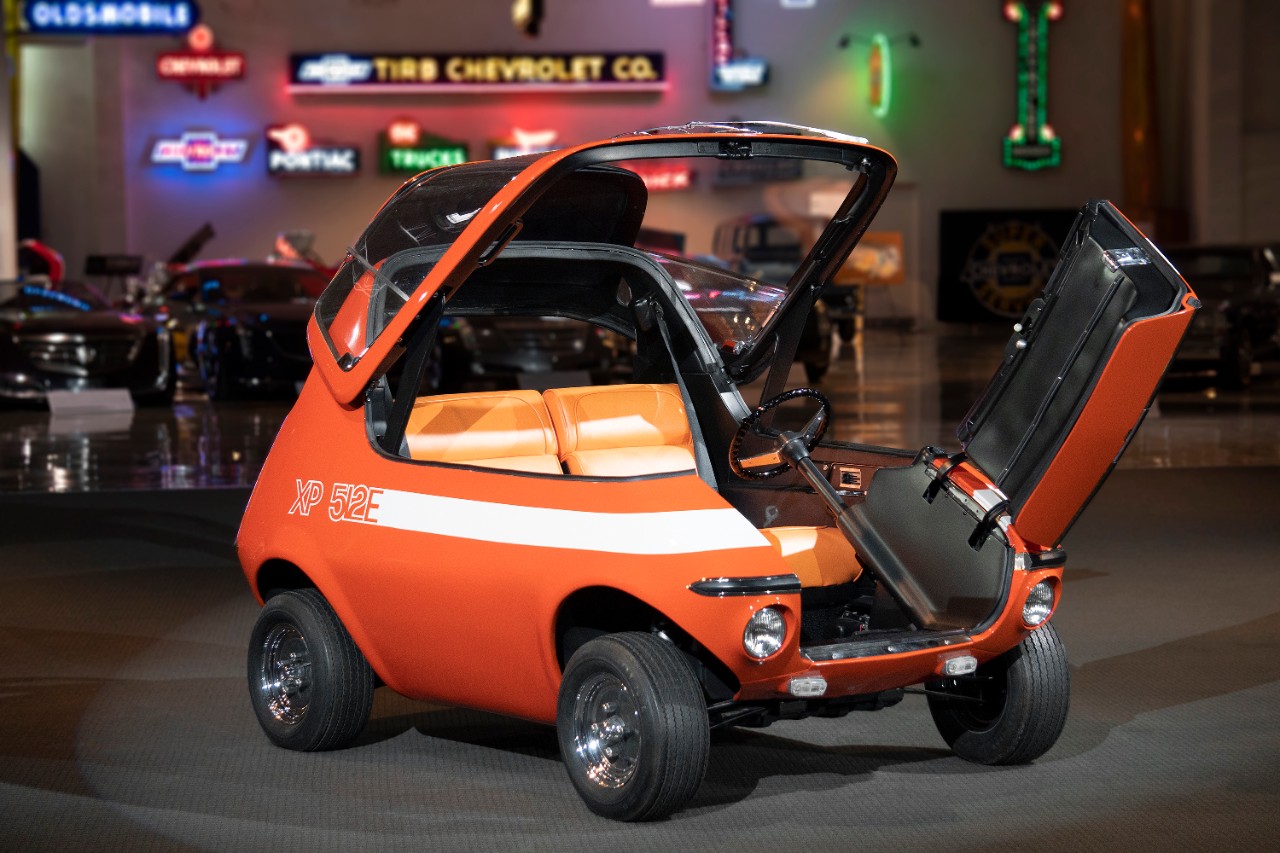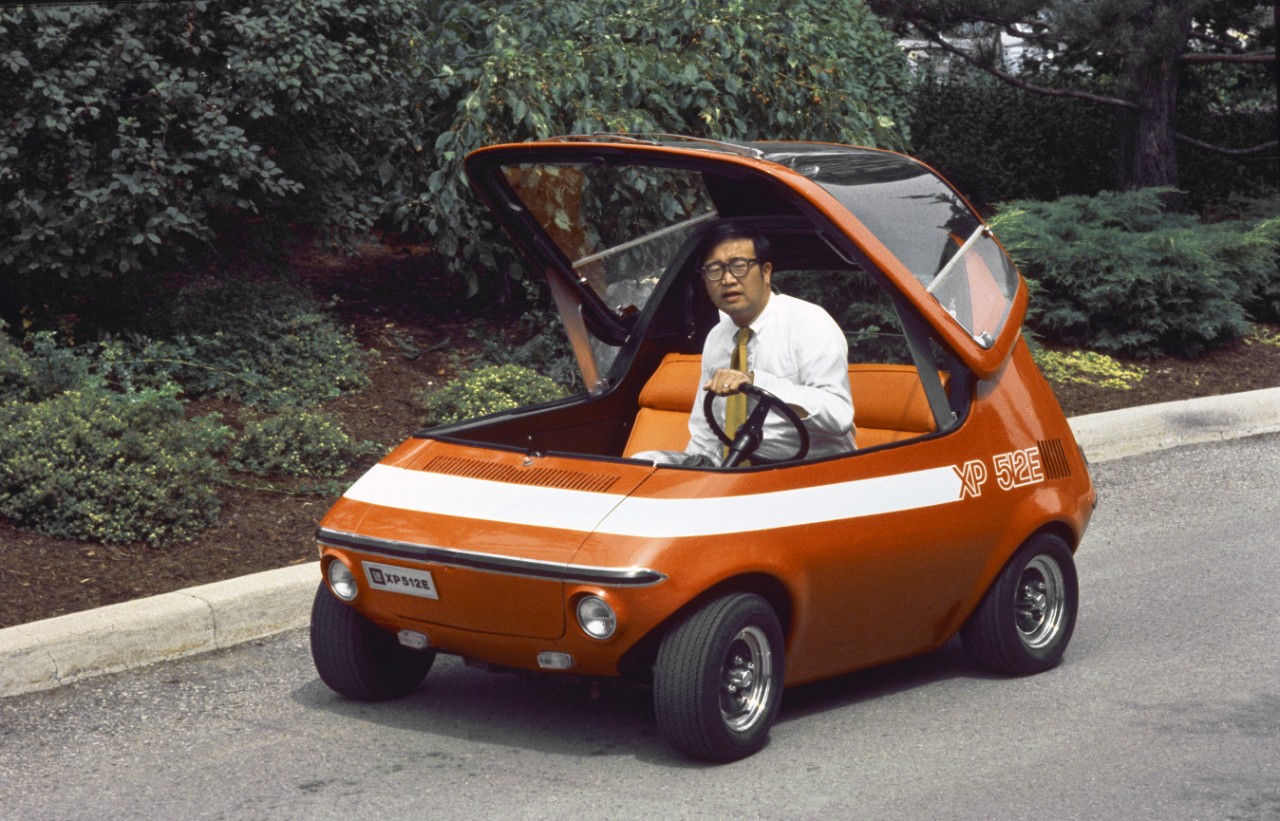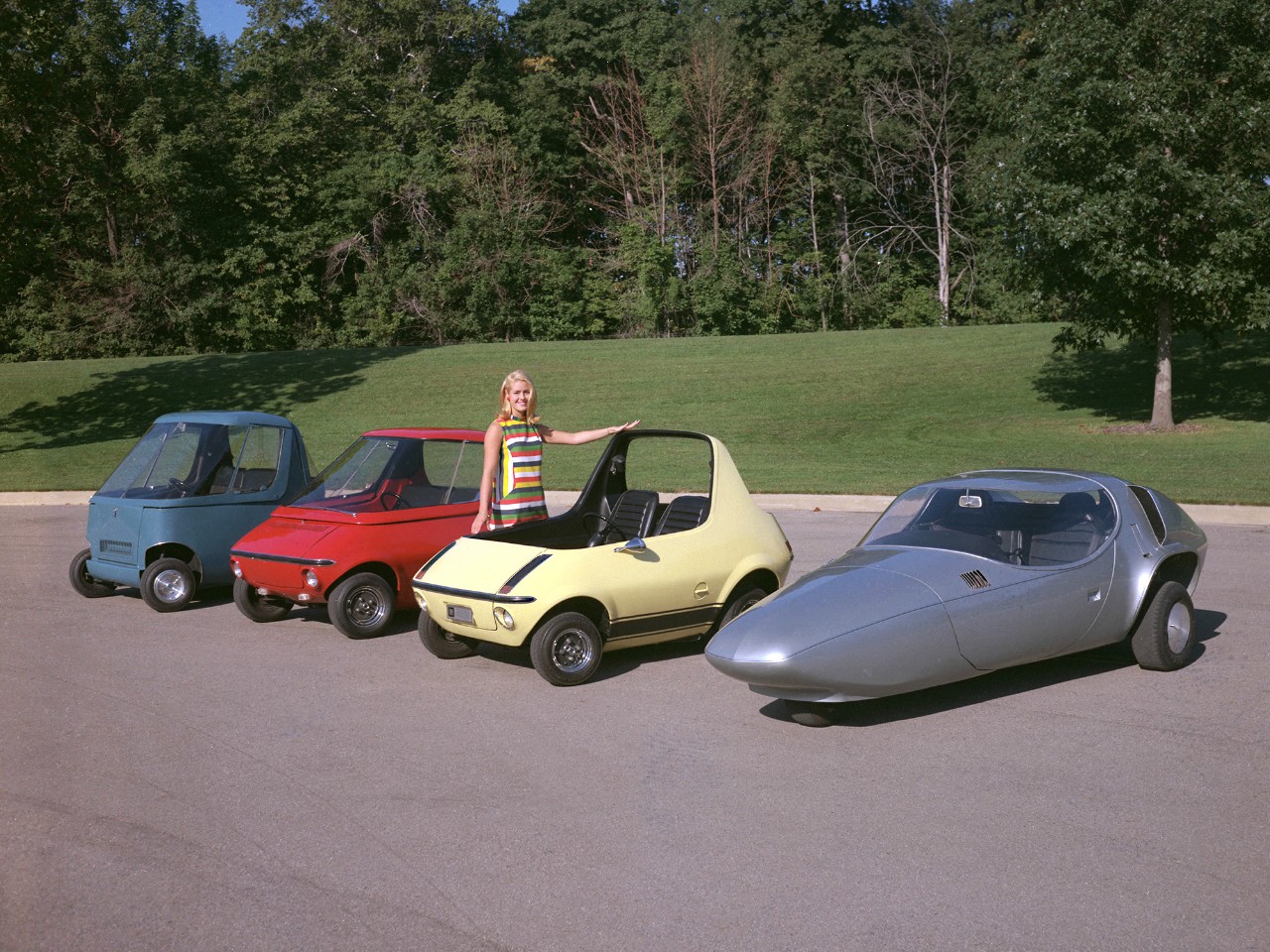By Sam McEachern, GM News
In the first quarter, General Motors saw sales of its electric vehicles nearly double from the comparable year-ago quarter – we're now the #2 seller of EVs in the U.S.1 But this was no overnight success story – GM has been dabbling with electric cars for more than half a century.
The GM EV1, which debuted in 1996, was the first mass-produced electric car from a major automaker. The Chevrolet Volt, which first hit the market in 2010, was the first commercially available plug-in hybrid in the U.S.2 But there’s a far more obscure (and tinier) GM EV that debuted much earlier: the 1969 XP 512E concept car.
While the car was never sold commercially, there is no question about this: it’s simply adorable.
The 512E - more formally known as the 512 Electric Experimental - debuted in May 1969 as part of GM’s “Progress of Power” exhibition for innovative vehicles. This tiny runabout boasted a wheelbase of 52 inches, an overall length of 86.3 inches and was just 56 inches wide. It had a fiberglass body with a steel floor pan, and weighed in at 1,250 pounds. With a lightweight 84-volt lead acid battery pack and a DC electric motor mounted on the rear axle, the 512E could travel up to 58 miles at 25 mph, or 47 miles at its top speed of 30 mph. It could accelerate from 0-30mph in a sluggish 12 seconds. This was no speed demon.
The GM 512E with the canopy top raised and front entry door opened.
The 512E was unveiled well before the arrival of modern Level 2 chargers; the 512E’s battery juiced up using a typical 115-volt household outlet, which would take around 7 hours. The charger would also supplement the onboard 12-volt battery, which was used to power the car’s onboard accessories, which included a heater-defroster, head and tail lamps, turn signals, windshield wipers, and a horn.
A side-pivoted canopy top and lower front entry door made entering the rather tight interior a breeze, where passengers were greeted with a bench seat, a regular throttle and brake, a steering wheel and even an ashtray. The 512E was designed to be driven with the canopy front raised in nicer weather, which gave the car a “unique convertible appearance,” according to GM’s press release announcing the car. The canopy was also removable, allowing users to transform it into a tiny electric roadster.
A GM engineer sits in the 512E with the canopy top raised.
The 512E was one of three 512 city car concepts that GM showed at Progress of Power – which was held at the company’s Warren Technical Center in Michigan. The other two included a gasoline powered roadster model with a fuel-sipping 12-horsepower two-cylinder engine, as well as an impressive plug-in hybrid model that could operate in either all-electric or hybrid mode. The plug-in could travel up to 150 miles with a full fuel tank and battery, sipping only three gallons of gasoline for the trip.
(From right) The GM 512 Hybrid, 512 Electric, 512 Gasoline and the three-wheeled XP511 on display at the 1969 Progress of Power exhibition in Warren, Michigan.
In total, GM showed off 26 vehicles to the media at the 1969 Progress of Power, all of which had unconventional propulsion systems – including steam engines, turbines, hybrids, and battery-electric. It's an early example of GM’s commitment to engineering excellence and innovation – an attitude that lives on today in our lineup of electric and gas-powered vehicles.
Editor’s note: Retro Rides highlights noteworthy vehicles from the long history of General Motors. Over more than a century, GM has produced a huge variety of cars, trucks, SUVs, vans, station wagons, and even buses, some fondly remembered and sought after by collectors, others largely forgotten but worthy of rediscovery. With Retro Rides, we’re casting a fresh spotlight on some of GM’s great design, engineering and technology ideas of the past. Big thanks to the GM Heritage Center and Archives for making this series possible. If there’s a GM vehicle you think we should revisit, reach out to news@gm.com.
1According to GM 2025 U.S. Q1 sales results
2According to U.S. Department of Energy

In the first quarter, General Motors saw sales of its electric vehicles nearly double from the comparable year-ago quarter – we're now the #2 seller of EVs in the U.S.1 But this was no overnight success story – GM has been dabbling with electric cars for more than half a century.
The GM EV1, which debuted in 1996, was the first mass-produced electric car from a major automaker. The Chevrolet Volt, which first hit the market in 2010, was the first commercially available plug-in hybrid in the U.S.2 But there’s a far more obscure (and tinier) GM EV that debuted much earlier: the 1969 XP 512E concept car.
While the car was never sold commercially, there is no question about this: it’s simply adorable.
The 512E - more formally known as the 512 Electric Experimental - debuted in May 1969 as part of GM’s “Progress of Power” exhibition for innovative vehicles. This tiny runabout boasted a wheelbase of 52 inches, an overall length of 86.3 inches and was just 56 inches wide. It had a fiberglass body with a steel floor pan, and weighed in at 1,250 pounds. With a lightweight 84-volt lead acid battery pack and a DC electric motor mounted on the rear axle, the 512E could travel up to 58 miles at 25 mph, or 47 miles at its top speed of 30 mph. It could accelerate from 0-30mph in a sluggish 12 seconds. This was no speed demon.

The 512E was unveiled well before the arrival of modern Level 2 chargers; the 512E’s battery juiced up using a typical 115-volt household outlet, which would take around 7 hours. The charger would also supplement the onboard 12-volt battery, which was used to power the car’s onboard accessories, which included a heater-defroster, head and tail lamps, turn signals, windshield wipers, and a horn.
This video shows the GM 512E in action at GM's Warren Tech Center in Michigan. (note: video does not feature audio)
A side-pivoted canopy top and lower front entry door made entering the rather tight interior a breeze, where passengers were greeted with a bench seat, a regular throttle and brake, a steering wheel and even an ashtray. The 512E was designed to be driven with the canopy front raised in nicer weather, which gave the car a “unique convertible appearance,” according to GM’s press release announcing the car. The canopy was also removable, allowing users to transform it into a tiny electric roadster.

The 512E was one of three 512 city car concepts that GM showed at Progress of Power – which was held at the company’s Warren Technical Center in Michigan. The other two included a gasoline powered roadster model with a fuel-sipping 12-horsepower two-cylinder engine, as well as an impressive plug-in hybrid model that could operate in either all-electric or hybrid mode. The plug-in could travel up to 150 miles with a full fuel tank and battery, sipping only three gallons of gasoline for the trip.

The 512E was one of three 512 city car concepts that GM showed at Progress of Power – which was held at the company’s Warren Technical Center in Michigan. The other two included a gasoline powered roadster model with a fuel-sipping 12-horsepower two-cylinder engine, as well as an impressive plug-in hybrid model that could operate in either all-electric or hybrid mode. The plug-in could travel up to 150 miles with a full fuel tank and battery, sipping only three gallons of gasoline for the trip.
Editor’s note: Retro Rides highlights noteworthy vehicles from the long history of General Motors. Over more than a century, GM has produced a huge variety of cars, trucks, SUVs, vans, station wagons, and even buses, some fondly remembered and sought after by collectors, others largely forgotten but worthy of rediscovery. With Retro Rides, we’re casting a fresh spotlight on some of GM’s great design, engineering and technology ideas of the past. Big thanks to the GM Heritage Center and Archives for making this series possible. If there’s a GM vehicle you think we should revisit, reach out to news@gm.com.